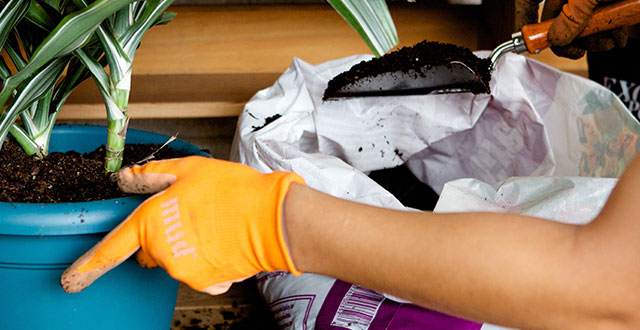House Plants that Clean the Air
Look in any home décor catalog and you’ll see that one of the final touches of a perfectly decorated space is greenery; the more real, the better.
Not only are houseplants beautiful to look at, they play a significant role in cleaning the air. Wasn’t sure that was true? Well, now you do. In fact, NASA studies revealed that several types of houseplants proved beneficial in removing harmful carcinogenic household toxins including: benzene, formaldehyde and trichloroethylene.
You can shelve that eyesore of an air purifier and load up on these beauties: ferns, ivy, orchids, and lilies. (We got you covered with a complete list below.) As if this new information were not enough, we have a video to fuel your inspiration! Get ready — health and beauty are within reach!
Materials List
- Container
- Plants
- Potting soil
- Watering can
- Gloves
- Trowel
- Liquid plant food
- Decorative rocks
- Decorative moss
Steps
- Pick Your (Anti) Poison: Houseplants known to help clean indoor air include:
- Aloe Vera
- Areca Palm
- Baby Rubber Plant
- Bamboo Palm
- Boston Fern
- Chinese Evergreen
- Corn Plant
- Dracaena Janet Craig
- Dracaena warneckei
- Dwarf/Pygmy Date Palm
- English Ivy
- Ficus alii
- Gerbera Daisy
- Golden Pothos
- Kimberly Queen Fern
- Lady Palm
- Madagascar or Dragon tree
- Moth Orchid
- Mums
- Peace Lily
- Philodendron
- Schefflera
- Snake Plant
- Spider Plant
- Weeping Fig or Ficus
- Find a Permanent Home: Many indoor plants come in a temporary container, but you will likely want to transfer the plant into a permanent, decorative container. You can also set the temporary container in the permanent one, and simply remove to water. For optimal air purification, use one 10- to 12-inch potted plant per 100 square feet of your home.
- Location is Everything: Be sure to think through the light requirements of each plant you choose, and find a suitable place in your home so they will thrive.
- Soil Happens: Over time, it is important to replenish the soil to keep plants healthy and growing. If you’re going for “Houseplant Parent of the Year,” consult a nursery or garden center professional about a liquid plant food to give your plants a little boost.
- Drink Up: Different plants have different watering needs, so be sure you understand the water needed for each plant and keep watering schedules balanced. Indoor air tends to be drying so indoor plants may need extra hydration.
- Neat & Tidy: Decorate your indoor friends with pebbles or colored moss. From time to time, dust the leaves of your plants with a damp cloth to ensure proper absorption of air particles and toxins.
